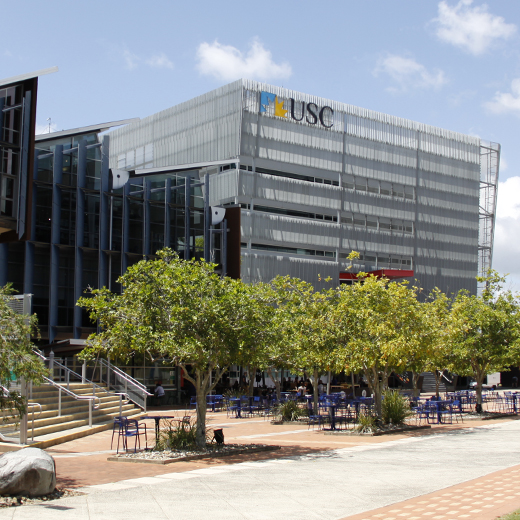The significant financial impact that USC is having on its communities has been highlighted in a new report released today by the Regional Universities Network (RUN).
The 'Economic Impact of the Regional Universities Network’ report, produced by the Nous Group and Victoria University’s Centre of Policy Studies, uses data from 2018 that shows USC contributed $199 million in that year to the combined real GDP of its various regions from north of Brisbane to the Fraser Coast.
On the Sunshine Coast alone, where USC’s largest campus is located, USC contributed $174 million to the region’s real GDP in 2018.
The report also showed four of USC’s campuses – at the Sunshine Coast, Caboolture, Gympie and Fraser Coast – delivered a total of $155 million in student expenditure, $287 million in university expenditure, and $49 million in university research value.
These figures are up from $133 million, $200 million and $32 million respectively in 2015, the previous year featured in a RUN-commissioned report of this nature.
USC Vice-Chancellor Professor Helen Bartlett, who is the current Chair of RUN, said the latest report had considered RUN member universities’ impact on real GDP, employment, real wage levels, and industry productivity in regional areas.
“It models the economic contribution RUN member universities have on their regional campus economies through their impact on spending, jobs and research,” she said.
“Regional universities, such as USC, are key drivers of economic activity. They act as anchor institutions by attracting students, increasing local demand for goods and services, and creating jobs outside capital cities.
“They also increase graduates’ lifetime earnings, fill the demand pipeline for skills in key sectors of the economy, and bring research benefits to the regions.”
Professor Bartlett said the report investigated four scenarios that could see RUN universities contribute even further to regional economies. The scenarios were:
- Providing regional universities with a more equitable share of research funding (up from three percent to six percent of overall research funding);
- Encouraging more regional students to attend universities, with the aim to halve the disparity in university attendance between regional and metropolitan areas;
- Providing more infrastructure investment in the form of a one-off capital investment boost of $50m for each regional university; and
- Enabling regional universities to play a bigger role as anchor institutions through encouraging more flexible population movement to regional areas.
Professor Bartlett said each of the four scenarios – particularly the fourth one – would achieve significant benefits for USC’s regions through boosting real GDP and creating employment.
“The scenario modelling has demonstrated that the greater the investment in regional universities, the greater the benefits to regional Australia,” she said.
“Further to that, we know that seven out of 10 RUN undergraduates go on to work in regional Australia, compared to 2.5 out of 10 of non-RUN undergraduates.
“And regional universities play such an important role in providing work-ready graduates for key industries in regional Australia, particularly in areas such as health care, social assistance and education.”
— Terry Walsh
Media enquiries: Please contact the Media Team media@usc.edu.au

